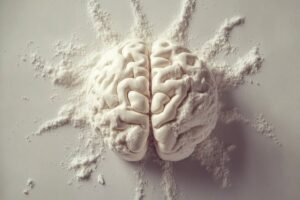In a startling revelation, a recent study has highlighted the widespread impact of a ‘silent’ disease that affects nearly a third of adults worldwide. Non-alcoholic fatty liver disease (NAFLD) is emerging as a major health concern, with an estimated 15 million people across the US, UK, Germany, and France unknowingly living with the condition.
Research published in The Lancet Regional Health Europe indicates that approximately 20 million individuals are suffering from NAFLD, yet only 2.5 million have received a formal diagnosis. This discrepancy underscores the disease’s underdiagnosed nature, with one medical expert dubbing it the “most deadly yet underdiagnosed condition.”
Understanding Non-Alcoholic Fatty Liver Disease
NAFLD, also referred to as metabolic dysfunction-associated steatotic liver disease (MASLD), occurs when more than five percent of the liver is composed of fat in individuals who consume little to no alcohol. This differentiates it from alcohol-related fatty liver disease, which is linked to excessive alcohol consumption.
The disease progresses in stages, beginning with ‘simple fatty liver,’ where fat accumulates in liver cells. The more severe form, known as metabolic dysfunction-associated steatohepatitis (MASH), involves liver inflammation due to fat build-up, potentially leading to cirrhosis or liver cancer.
Recognizing the Symptoms
NAFLD often goes unnoticed due to its asymptomatic nature. However, some individuals may experience:
- Fatigue
- Feeling unwell
- Pain or discomfort in the upper right abdomen
Symptoms of MASH can be more pronounced and include:
- Itchy skin
- Abdominal swelling
- Shortness of breath
- Swelling of the legs
- Spider-like blood vessels beneath the skin
- Enlarged spleen
- Red palms
- Jaundice
Risk Factors and Diagnosis
According to the NHS, certain factors increase the risk of developing NAFLD:
- Obesity or being overweight
- Type 2 diabetes
- Conditions affecting insulin use, such as polycystic ovary syndrome
- Underactive thyroid
- High blood pressure
- High cholesterol
- Metabolic syndrome
- Age over 50
- Smoking
NAFLD is frequently detected during routine medical tests, with imaging techniques used to confirm the diagnosis. Dr. Chris Boettcher, a prominent voice on social media, emphasizes the reversible nature of the disease through lifestyle changes.
Treatment and Management
Effective management of NAFLD often begins with weight loss. The Mayo Clinic advises that losing 10 percent of body weight or more is ideal, though even a reduction of three to five percent can yield significant benefits.
“The most deadly yet underdiagnosed condition by doctors: Non-Alcoholic Fatty Liver Disease. 1 in 3 adults have it, and it silently leads to cancer, diabetes, and early death. Just losing 7-10% of your bodyweight reverses non-alcoholic fatty liver disease in up to 90% of people. It directly: Burns liver fat, lowers inflammation, reduces insulin resistance.” – Dr. Chris Boettcher
As awareness of NAFLD grows, healthcare professionals are urging increased vigilance and proactive screening to combat this silent epidemic. The implications of unchecked NAFLD are profound, potentially leading to severe health complications if left untreated.
Looking ahead, the medical community is advocating for more comprehensive public health strategies to address this burgeoning issue, emphasizing the importance of early detection and lifestyle interventions. As research continues, the hope is to mitigate the impact of NAFLD and improve outcomes for millions worldwide.







